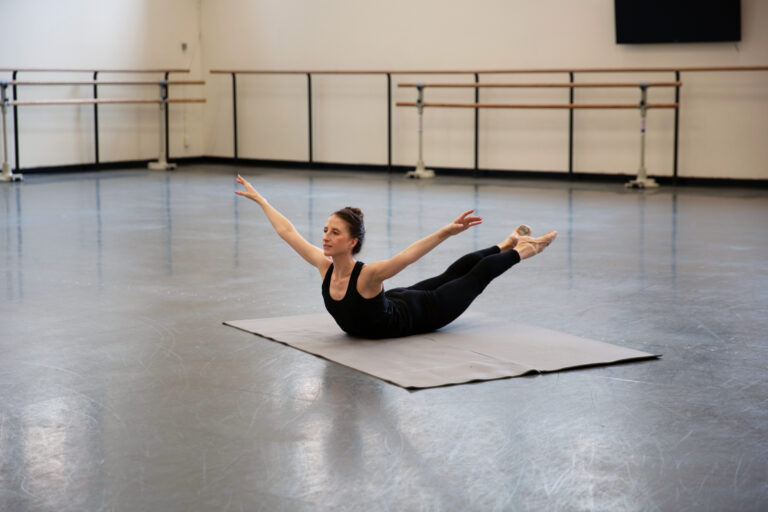
Moving tap classes to a virtual format wasn’t easy when the pandemic began: Not everyone had access to a floor that was appropriate for tap shoes, and students had to mute themselves on Zoom to avoid creating a cacophony of footwork.
Thankfully, Anthony Morigerato had plenty of experience teaching dance through a screen. In 2014, he co-founded Operation: Tap, an online platform of exercises, classes, routines and social media forums developed with colleagues Ayodele Casel and Mike Minery. “We wanted to have a resource that would help everybody—especially people who don’t live in a big city like New York or Los Angeles—feel connected to the tap community,” he says. “But online learning took a big toll on young dancers. I try to remind them that it’s more about the journey, that it takes years to become a proficient tap dancer. They don’t have to get the material right away in class; it’s a seed that can grow into something bigger over the course of time.”
The platform helped solidify Morigerato’s career as an in-demand tap artist and educator. Since launching Operation: Tap, Morigerato has produced several short films, created routines for “So You Think You Can Dance” and received an Emmy nomination for Outstanding Choreography. He also danced alongside Casel in her acclaimed production Chasing Magic, produced by The Joyce Theater. Morigerato resides in New York City, where he’s currently writing a feature film, and spends a lot of time on the road teaching at festivals internationally.

For his DanceTeacher+ lesson plan, Morigerato teaches a traveling time step (which follows a traditional three-and-a-break structure), providing both a beginner and an advanced version. “I like this step because the dancer moves in space while maintaining groove and time,” he says. “To me, tap dance is the marriage of music and motion. This step addresses both equally.”
Beginner Pattern
&a1 a2 a3 a4 5&a6 a7a 8a1
shuffle step shuffle ball change ball change hop shuffle step shuffle step shuffle stamp
L R R, L R, L L R R L R
Step 1: Begin with your weight on your right leg. Shuffle your left leg and then step with a flat foot (&a1), which shifts your weight to your left side. To continue the swing groove, shuffle your right leg (a2), then ball-change twice, moving to the left (a3a4).
“Teachers should pay attention to dancers’ weight shift and connection to the floor,” says Morigerato.
Step 2: Hop on your left leg on the count of 5, then shuffle-step three times, alternating right, left, right. This step swings to the rhythm of 5&a6-a7-a8-a1. (The counts of the shuffle steps, therefore, are “&a6”, “a7a”, “8a1”.) The very last sound, on the count of 1, is a flat foot [also known as a “stamp”], as before.

Advanced Pattern
&a1 a2 a3 a4 a5 &a6 &a7&a 8&a1
shuffle step shuffle ball change ball change flap shuffle step shuffle shuffle land shuffle brush stamp
L R R, L R, L L R L R L R L R
Step 1: Same as the beginner pattern: &a1-a2-a3-a4. Finish with your weight over your left leg.
Step 2: Flap forward on your left foot (a5). Using your core and your arms will help you lift in order to make the initial sound of the flap. Shuffle-step with your right leg (&a6).
Step 3: Shuffle your left leg (on the counts of “&a” before 7), then take off from your right leg, shuffle it, and land on your left leg (7&a). As with the flap in the previous step, use your whole body to help you get the lift you need to shuffle successfully on the right leg.
Step 4: Finish the phrase by shuffling your right leg (8&), brushing your left foot forward and landing on your right leg (a1). The brush requires the same lift in the body as the flap and shuffle you did previously.
Once you finish doing either pattern one time, the stamp at the very end (on the count of 1) allows you to reverse the phrase right away, making it a time step. Continue the step on the other side by shuffling your left leg on “a2,” ball-changing twice to the right, and then finishing the rhythm as described above.
After performing the step three times (right, left, right), complete the pattern by improvising the final eight counts. Your improvisation can be as basic or as intricate as you’d like, as long as you’re ready to begin the pattern again on the count of 1.
“I emphasize rhythm before steps and try to impress upon students that it’s important what they’re doing musically,” says Morigerato.
Watch the video tutorial below:





